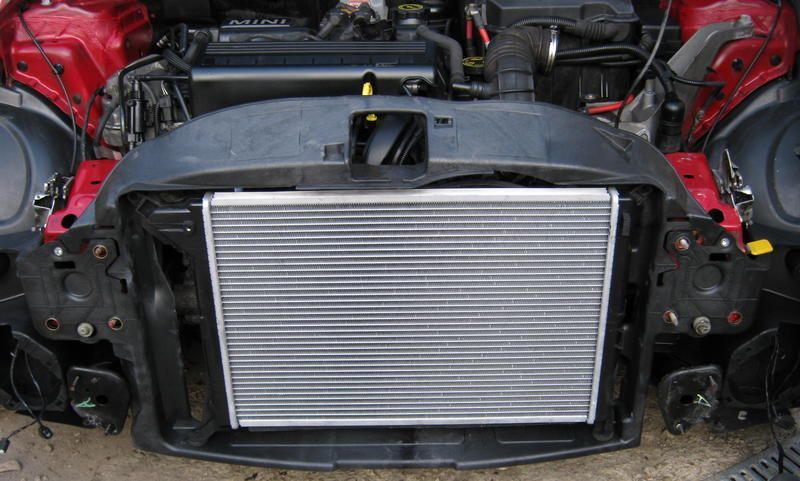Cooling System Repair Services

The HAUS is your neighborhood radiator and engine cooling repair shop in Los Angeles, CA.
At Haus, our certified technicians have previous dealership experience. This ensures that you’re receiving service from the best cooling system technicians in Los Angeles – at a fraction of what you’ll pay at the dealership. Our team can install and maintain cooling system parts and perform cooling system modifications on your vehicle.
Cooling System Services:
- Coolant Flush
- Cooling System Inspection
- Water Pump Replacement
- Radiator Replacement
- Thermostat Replacement
- Performance cooling system upgrades including Hoses and Radiators
Don’t Ignore Your Vehicle’s Cooling System!
If your engine is running hotter than normal or you notice coolant puddled under your vehicle, it’s time for a cooling system inspection. Your engine’s combustion generates an incredible amount of heat that must be dissipated to avoid expensive damage or complete failure. Finding and fixing minor cooling system issues early can often help you avoid expensive major repairs.
Cooling System Basics
Your vehicle’s cooling system consists of a variety of parts that work together to remove heat from your engine. This includes the water pump, thermostat, cooling fan, radiator, heater core, and heater valve. When your engine reaches its maximum operating temperatures, the thermostat opens and releases coolant (also called antifreeze) from the engine into the radiator.
This initiates a circulatory flow that absorbs excess heat. The antifreeze flows through the engine and back to the radiator where the heat escapes. It is then cooled by the cooling fan so it’s ready to be re-released when needed to cool the engine once again.
Over time, antifreeze breaks down and becomes less efficient. Without regular coolant flushes, the old antifreeze can cause corrosion. Damage to your cooling fan or fan belt can also lead to engine overheating. A periodic cooling system inspection will allow for early detection and repair of these common
problems.
Signs You’re Having Problems with Your Cooling System
Recognizing the signs of a cooling system problem can help you take care of small issues before they snowball into devastating engine damage. If you notice any of the following issues, you’ll want to schedule an appointment with one of our experienced technicians right away.
- Vehicle running hot or overheating
- Steam coming out from under the hood
- White exhaust fumes
- Fluctuating temperature gauge
- Low coolant levels
- Cooling fluid pooling under the vehicle
- Decreased gas mileage
These are all signs that you may need to repair or replace one or more of the components of your vehicle’s cooling system. Here’s a look at some of the most
common issues you may be dealing with.
Water Pump Failure
Your engine uses a liquid cooling system to help reduce heat. This is accomplished when the water pump pushes water through a series of hoses. The pump is powered by a pulley system that’s turned by your serpentine belt. If the pump fails, water won’t circulate, and your engine will quickly overheat.
Over time, rust can build up on your water pump, causing the metal to corrode and creating small holes in the pump’s surface. If you notice high-pitched sounds coming from the front of the motor, this could be a sign of a loose water pump pulley. Coolant leaks are also a common sign of a failing water pump.
Radiator Leaks
If your radiator hoses spring a leak, it creates a twofold problem. First, the system won’t have enough pressure to operate correctly. Secondly, the water will eventually drain out, leading to rapid engine overheating.
Radiator hoses are more likely to leak as they age, so changing them periodically can help you avoid this issue. The radiator itself can also leak, particularly if it sustains damage from a rock or other piece of debris. In this case, you’ll likely have to replace the entire radiator.
Low coolant levels and puddles of antifreeze under your vehicle are both common symptoms of a radiator leak. You may also notice white exhaust smoke, which is often caused by burning coolant, which can result from a leak.
Thermostat Failure
A failed thermostat can also create a huge problem for your vehicle’s cooling system. This device regulates your engine temperature and controls how much coolant flows through to the radiator. If the thermostat doesn’t work as it should, heat won’t dissipate correctly and your engine will quickly overheat.
Thermostat issues are fairly easy to identify. If you notice the gauge reading high or erratically changing, it’s a good idea to have it checked. You may also notice coolant leaks around the thermostat housing.
Trust The Haus for Your Cooling System Needs
Our experienced technicians can perform cooling system inspections, replacements, and upgrades on a wide variety of vehicles, including BMWs and Mini Coopers. Contact us today to schedule a VIP appointment.
